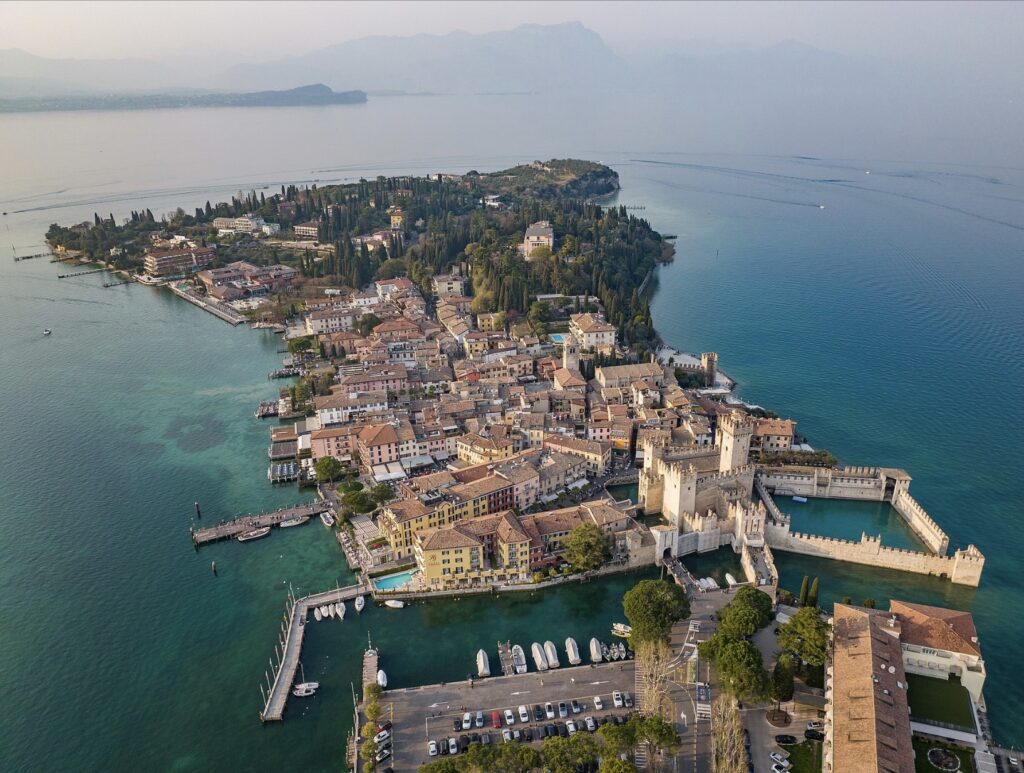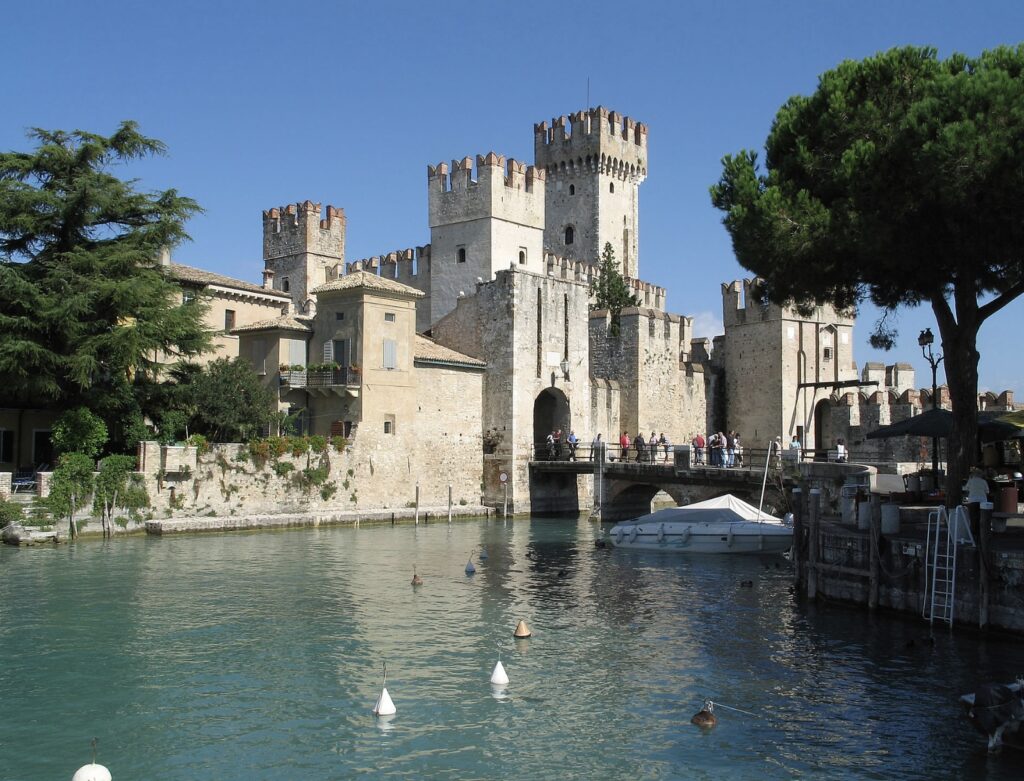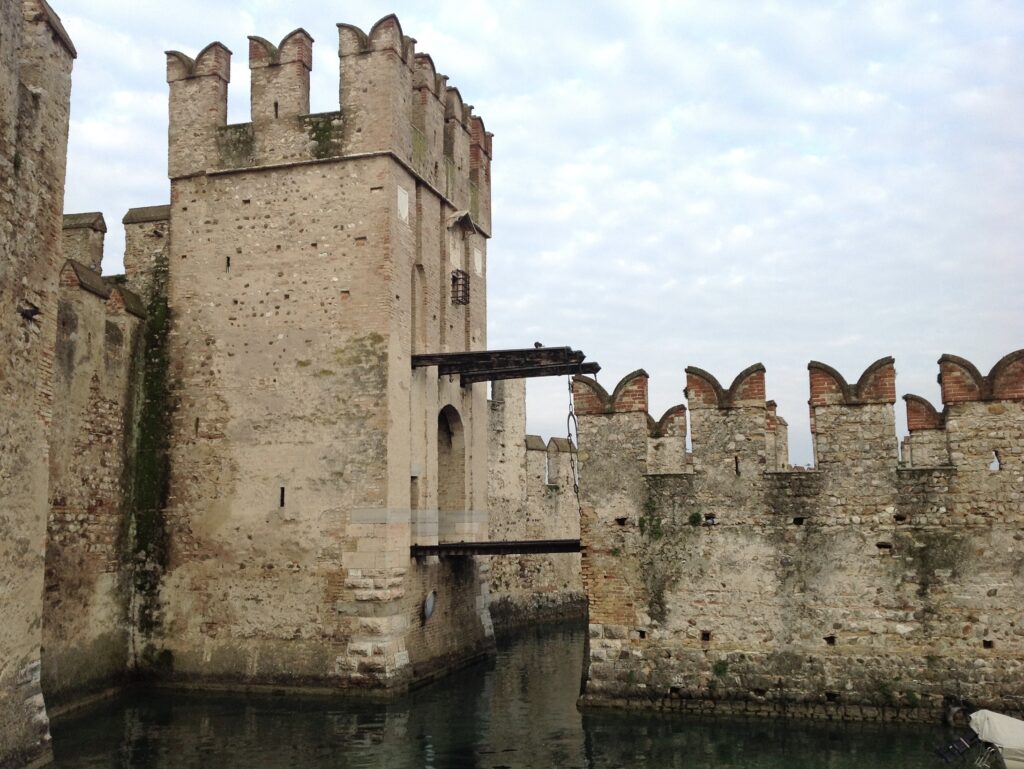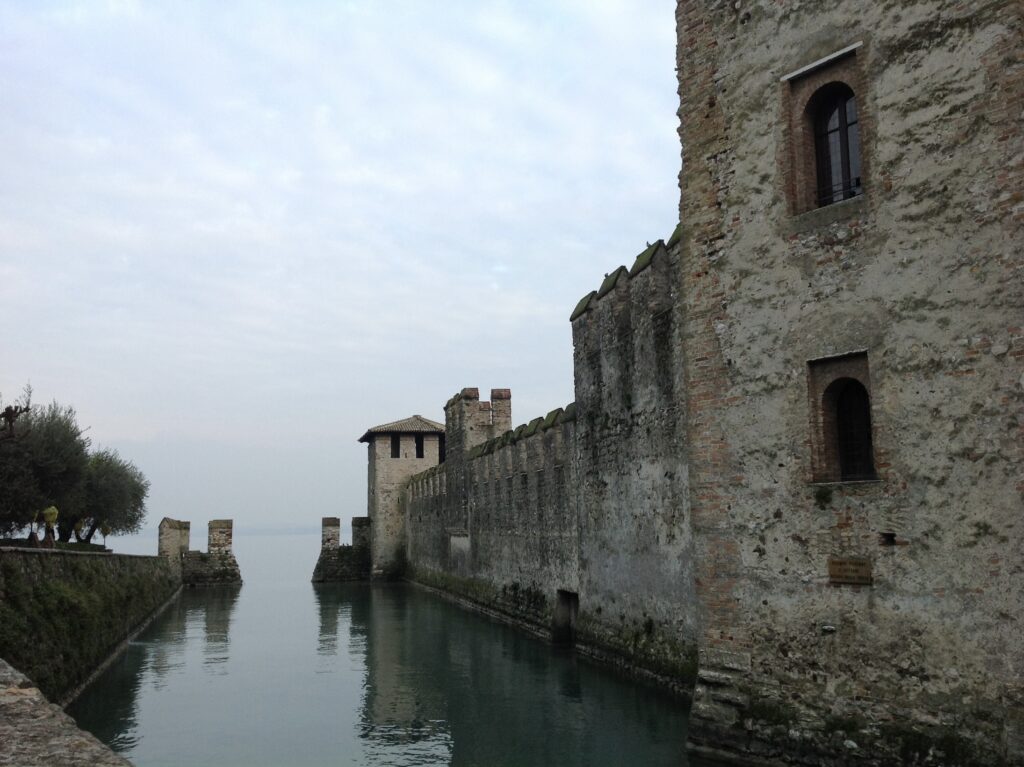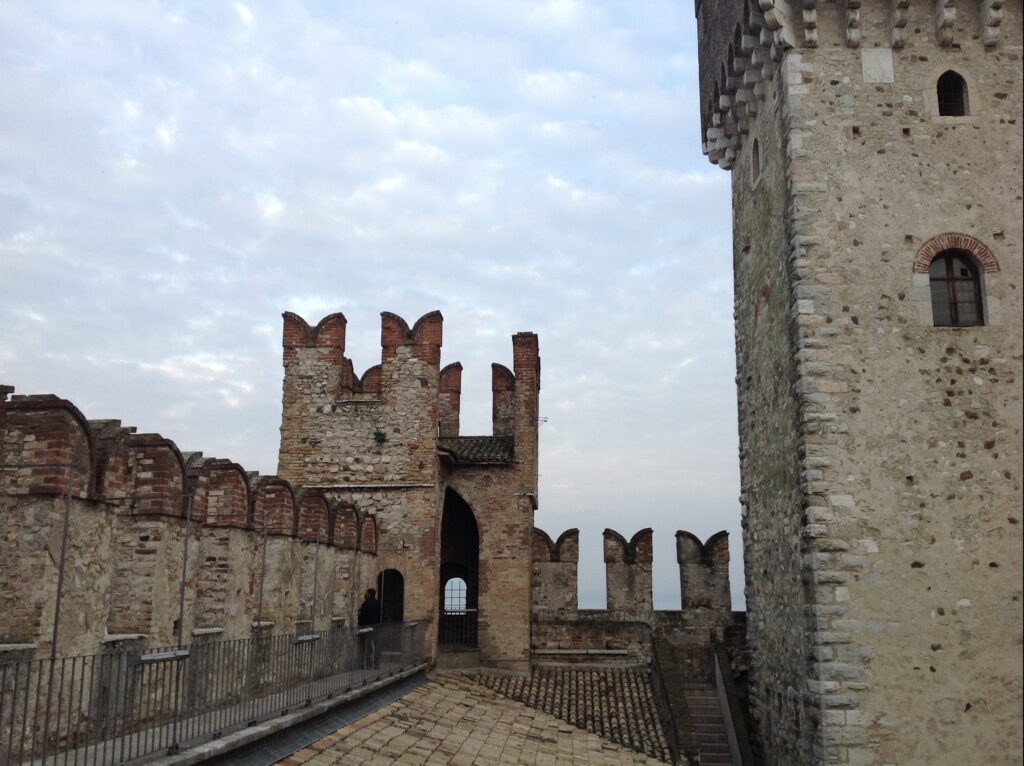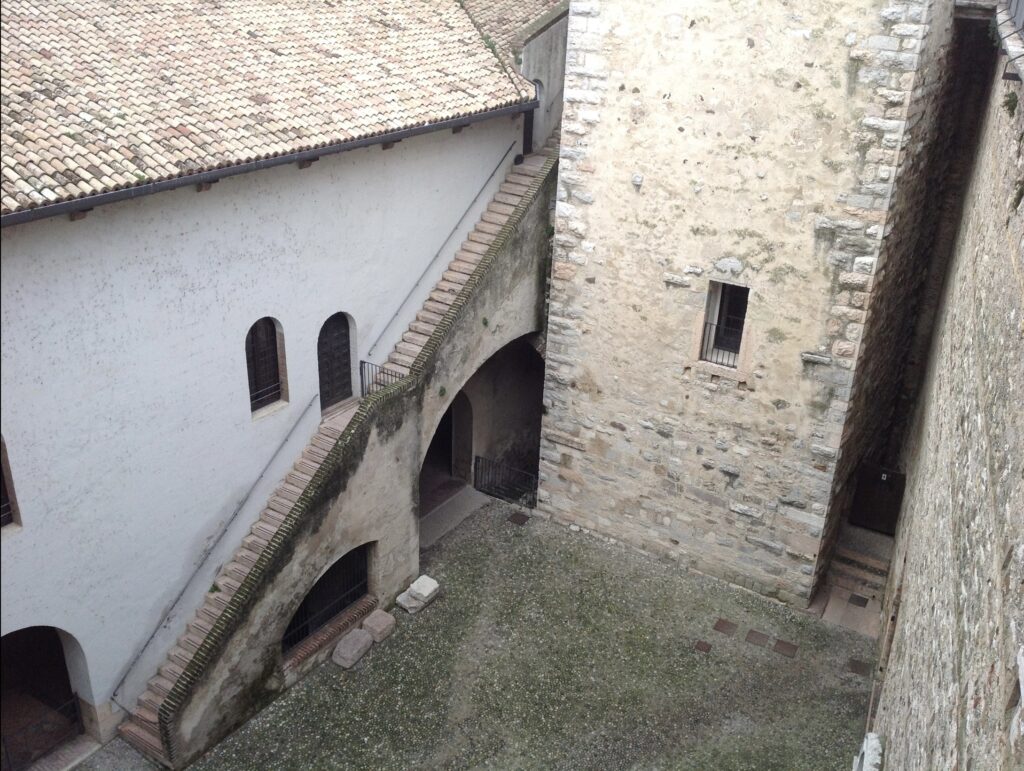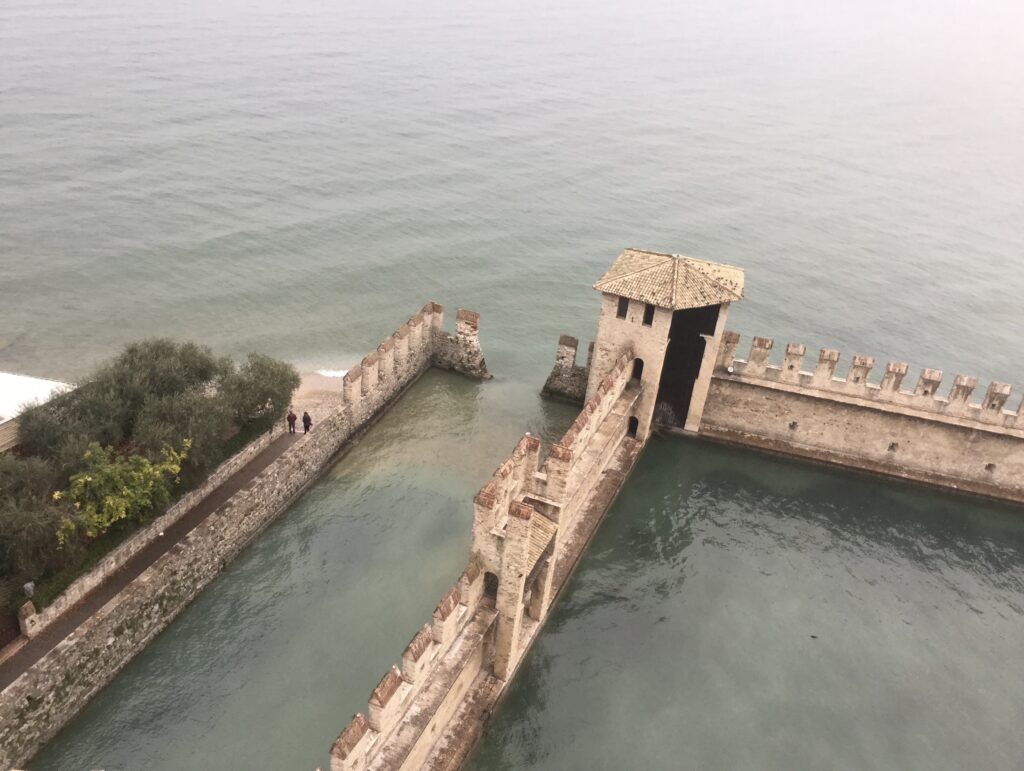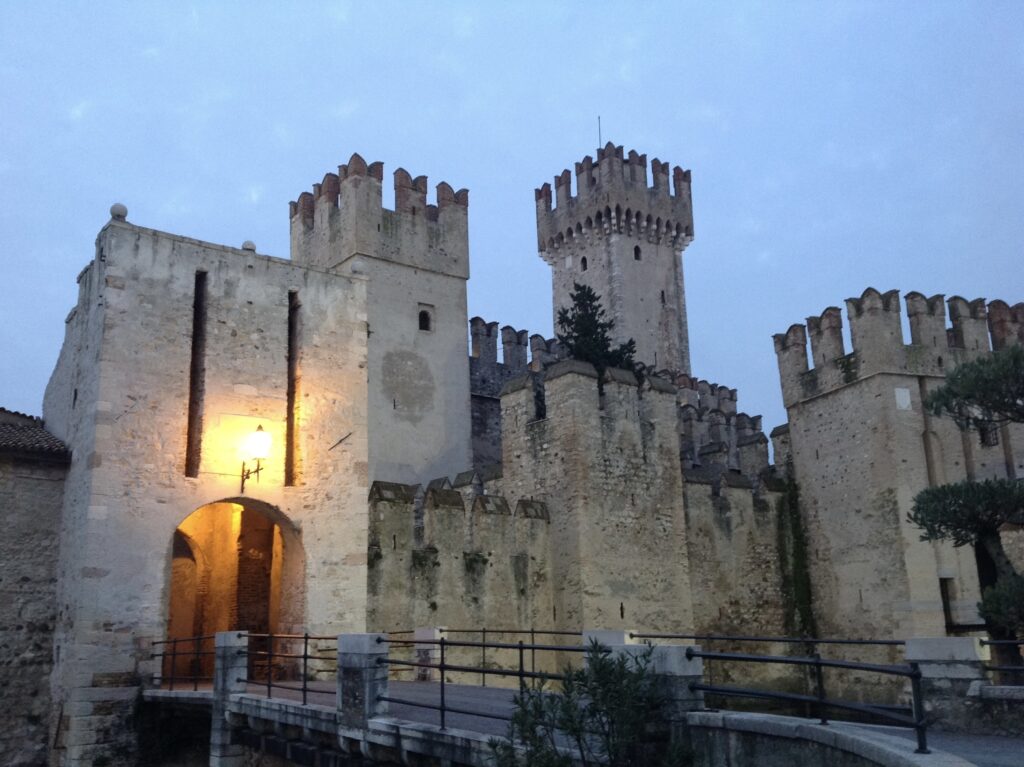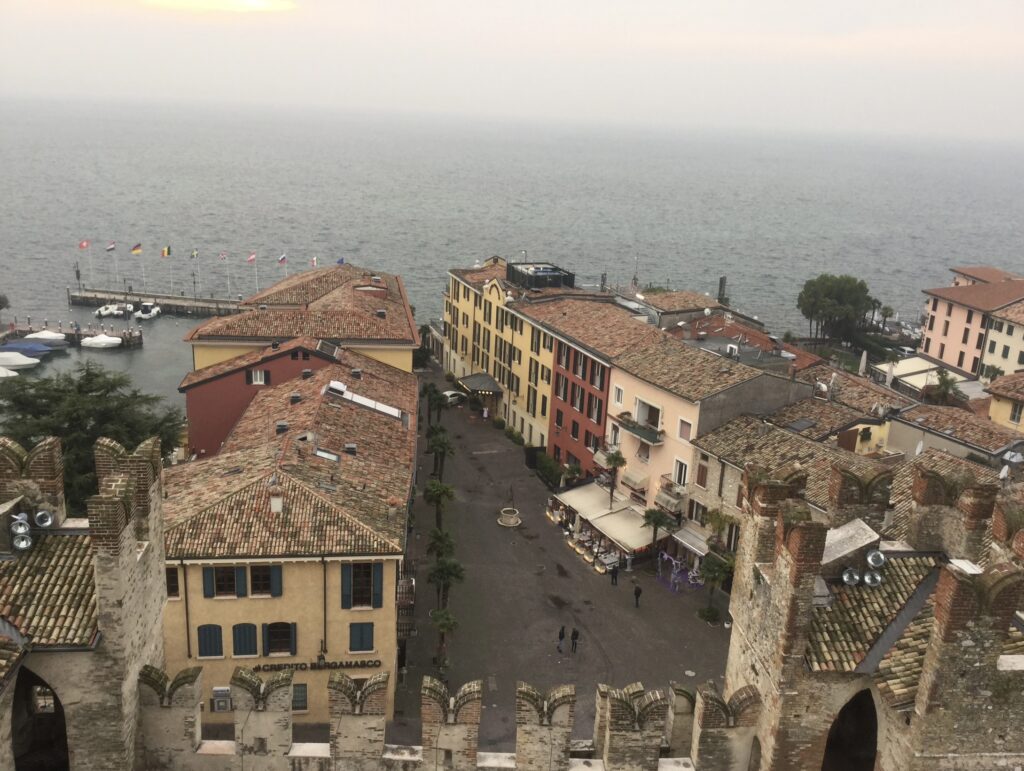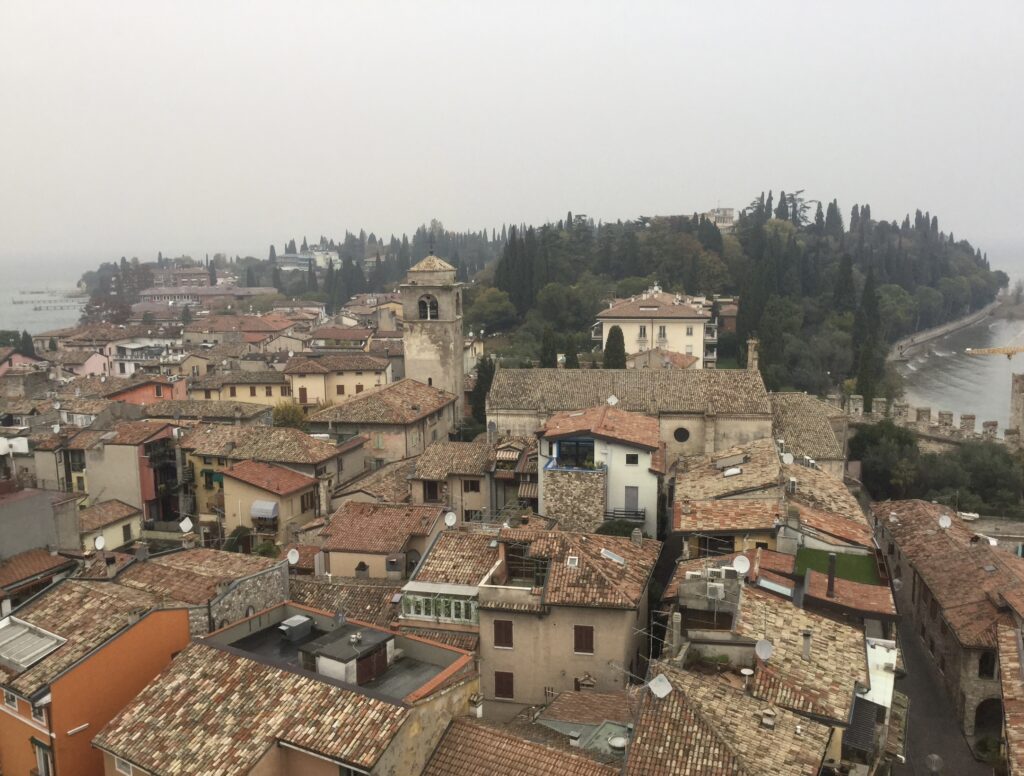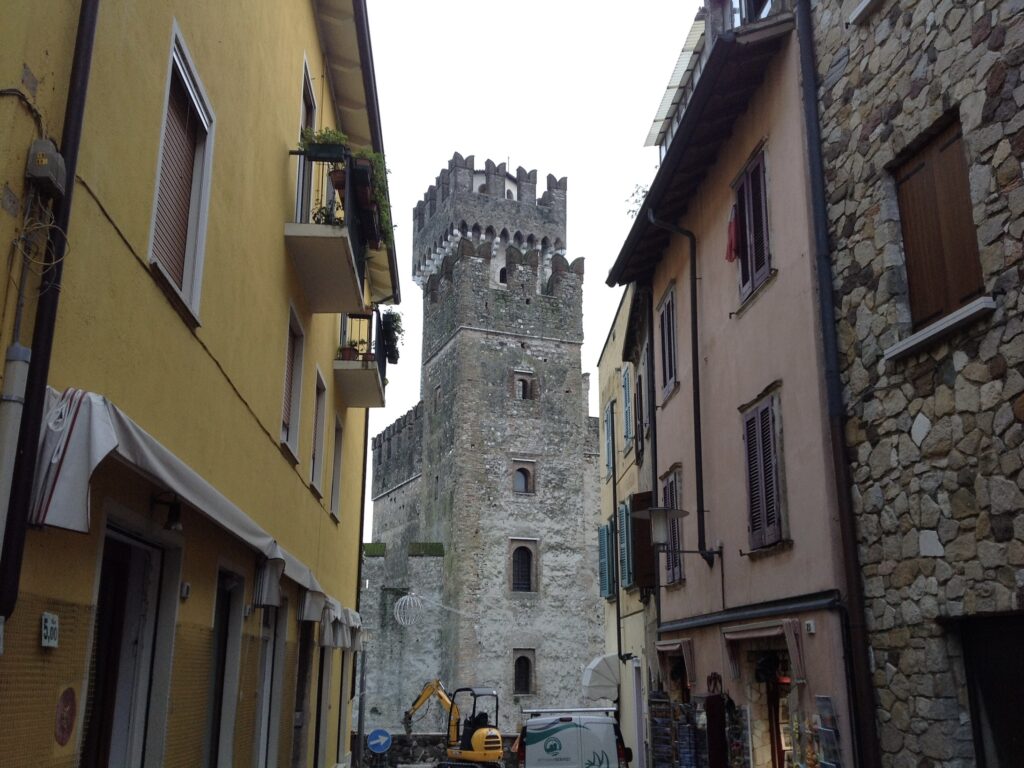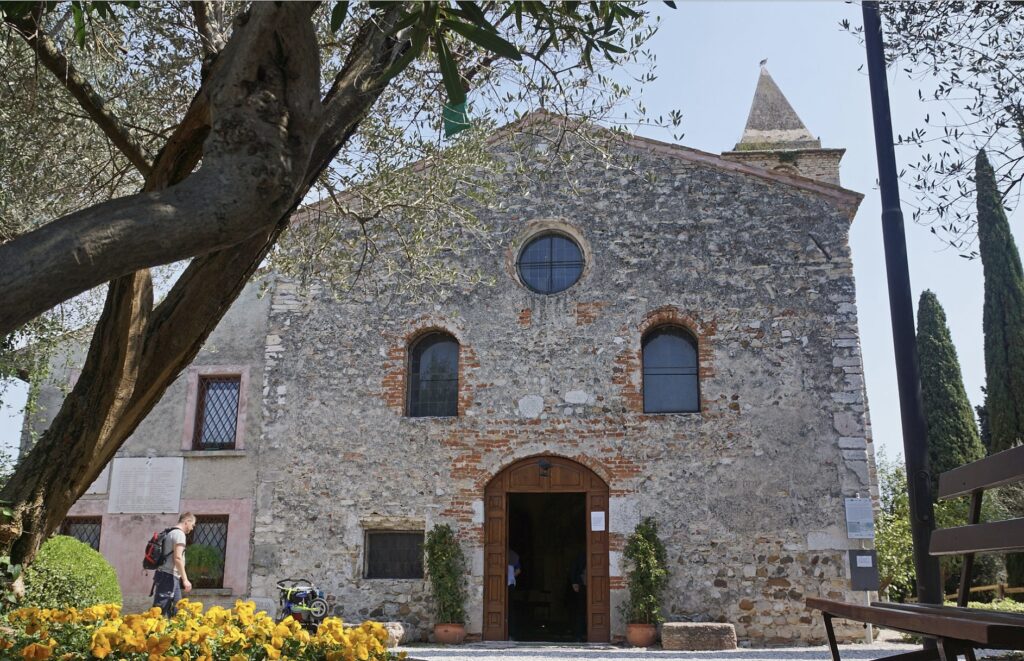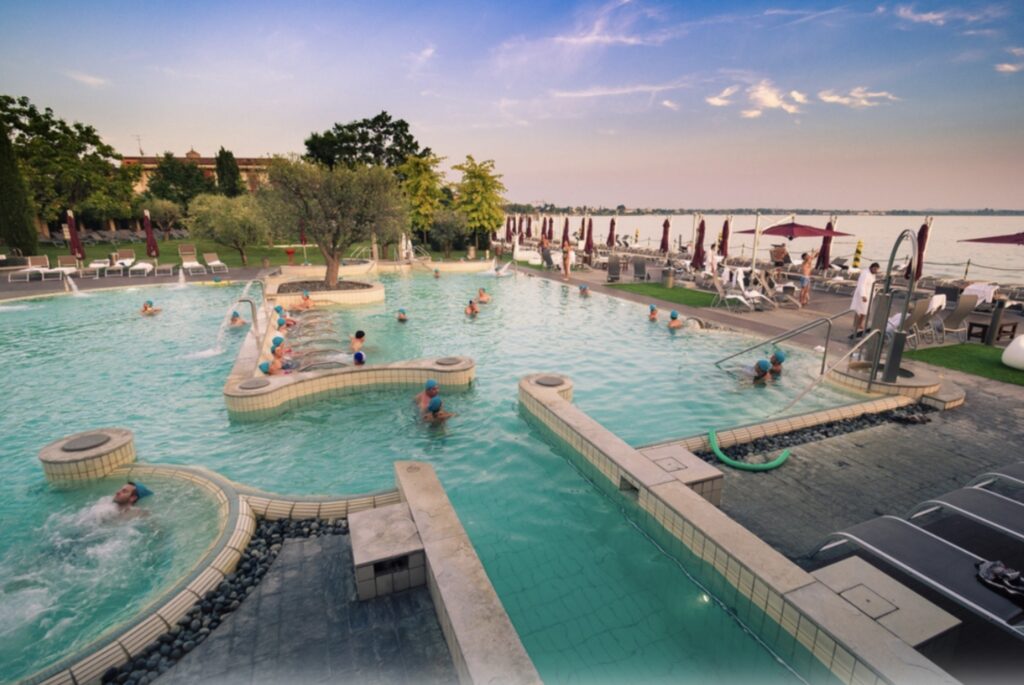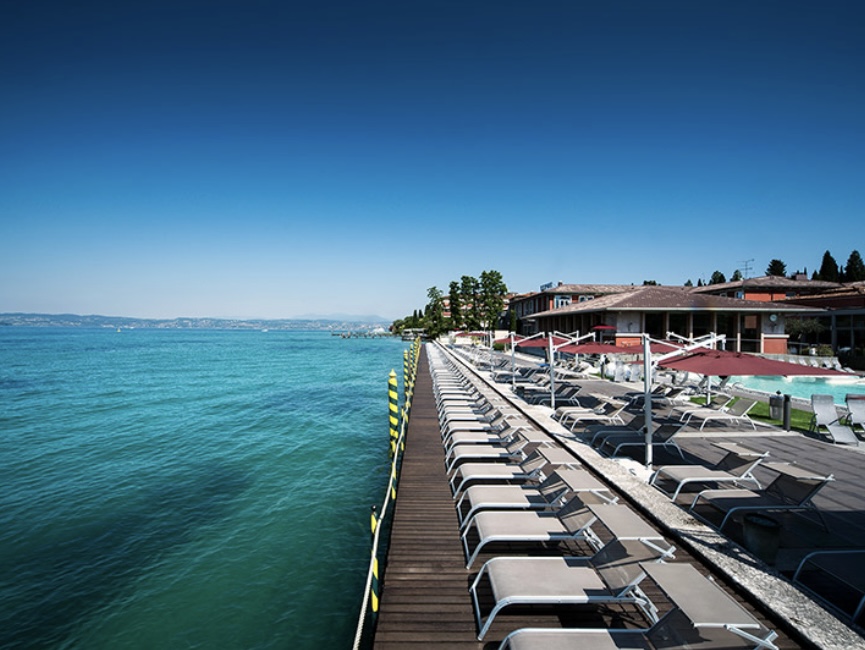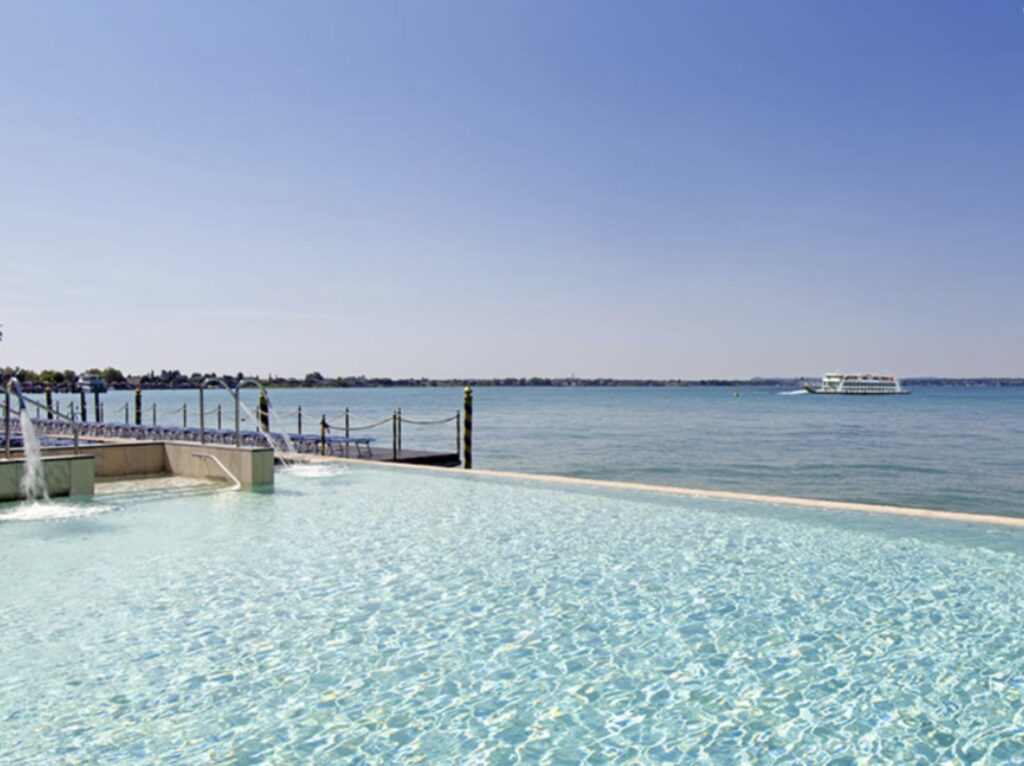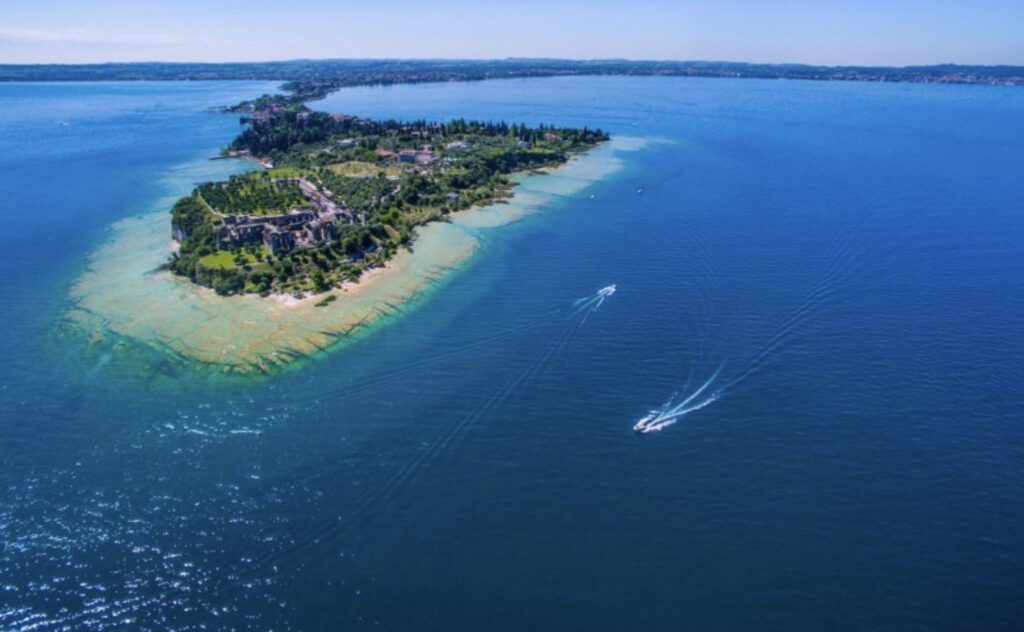ChatGPT:
Sirmione is a picturesque town located on the southern shore of Lake Garda in the Lombardy region of Italy. It is renowned for its stunning views, historical landmarks, and thermal baths. The town is situated on a narrow peninsula that juts into the lake, offering panoramic vistas of the surrounding water and mountains.
Sirmione has a rich and diverse history that spans several millennia, contributing to its development as a notable location in Italy.
Ancient History
- Prehistoric and Roman Periods: Sirmione’s strategic location on Lake Garda attracted early settlers. Archaeological findings suggest human presence as far back as the Bronze Age. During the Roman period, Sirmione became a popular resort area. The Grottoes of Catullus, the ruins of a grand Roman villa, indicate the town’s prominence during this era, possibly serving as a retreat for wealthy Romans, including the poet Catullus.
Medieval Era
- Lombards and Scaliger Lords: After the fall of the Western Roman Empire, Sirmione was controlled by various barbarian tribes, including the Lombards. In the 13th century, the town came under the control of the Scaliger family of Verona. The Scaligers fortified Sirmione by building the impressive Scaliger Castle (Rocca Scaligera) to protect the town and control access to the lake.
Renaissance and Modern Periods
- Venetian Rule: In the 15th century, Sirmione fell under the dominion of the Venetian Republic. The town flourished as part of the Republic of Venice, benefiting from increased trade and stability.
- Austrian and Italian States: After the fall of the Venetian Republic in the late 18th century, Sirmione, like much of northern Italy, experienced periods of Austrian control. It wasn’t until the mid-19th century that Sirmione became part of the newly unified Kingdom of Italy.
20th Century to Present
- Tourism Development: In the 20th century, Sirmione began to develop as a tourist destination, capitalizing on its historical sites, scenic beauty, and thermal baths. The discovery and commercialization of its natural thermal springs attracted visitors seeking health and wellness treatments.
Today, Sirmione is a vibrant town that blends its historical legacy with modern amenities. It attracts tourists from around the world who come to explore its ancient ruins, relax in its thermal baths, and enjoy the picturesque landscapes of Lake Garda. The town has managed to preserve its historical charm while accommodating the needs of contemporary visitors.
Lake Garda’s history and development are intertwined with the broader historical and cultural evolution of the surrounding regions, encompassing prehistoric settlements, Roman influence, medieval conflicts, and modern tourism. Here’s a detailed look at its history and development:
Prehistoric and Ancient History
- Prehistoric Settlements:
- Evidence of human habitation around Lake Garda dates back to the Paleolithic era. Archaeological findings, such as stone tools and pile-dwelling settlements, indicate that early human communities settled in the area due to its abundant resources and favorable climate.
- Roman Era:
- During the Roman period, Lake Garda (then known as Lacus Benacus) became a popular retreat for wealthy Romans. The Romans appreciated the region for its mild climate and scenic beauty. Numerous villas and settlements were established along the lake’s shores. Sirmione, in particular, became famous for its thermal baths and the villa thought to have belonged to the poet Catullus.
Medieval Period
- Early Middle Ages:
- After the fall of the Western Roman Empire, the Lake Garda region experienced various invasions and settlements by Germanic tribes, including the Ostrogoths and Lombards. The Lombards, in particular, left a lasting impact on the region’s cultural and architectural landscape.
- Scaliger and Venetian Control:
- In the 13th and 14th centuries, the powerful Scaliger family of Verona extended their influence over the Lake Garda region. They built impressive fortifications, including the Scaliger Castle in Sirmione. Later, the region came under the control of the Venetian Republic, which brought stability and economic growth through trade and commerce.
Renaissance to Modern Period
- Renaissance and Austrian Influence:
- The Renaissance period saw continued prosperity in the Lake Garda region, with the construction of beautiful villas and gardens. In the late 18th century, the area came under Austrian control following the fall of the Venetian Republic. The Austrians contributed to the development of infrastructure, including roads and ports.
- Unification of Italy:
- In the mid-19th century, Lake Garda became part of the newly unified Kingdom of Italy. This period marked significant advancements in transportation, with the construction of railways and steamship services, making the lake more accessible to tourists.
20th Century to Present
- World Wars and Economic Development:
- During the 20th century, Lake Garda experienced the impacts of both World Wars. Post-war, the region saw rapid economic development and an increase in tourism. The natural beauty of the lake and its historical significance attracted visitors from across Italy and beyond.
- Modern Tourism:
- Today, Lake Garda is one of Italy’s most popular tourist destinations. The towns around the lake, such as Sirmione, Riva del Garda, Desenzano del Garda, and Malcesine, offer a blend of historical charm, cultural events, and recreational activities. The region is known for its outdoor activities, including sailing, windsurfing, hiking, and cycling.
- Environmental and Cultural Preservation:
- Efforts have been made to preserve the natural environment and cultural heritage of Lake Garda. Protected areas, historical site restorations, and sustainable tourism initiatives aim to maintain the lake’s beauty and significance for future generations.
Lake Garda’s development reflects a rich tapestry of historical events and cultural influences, from ancient Roman retreats to a modern tourist hub, showcasing the region’s enduring appeal and significance.
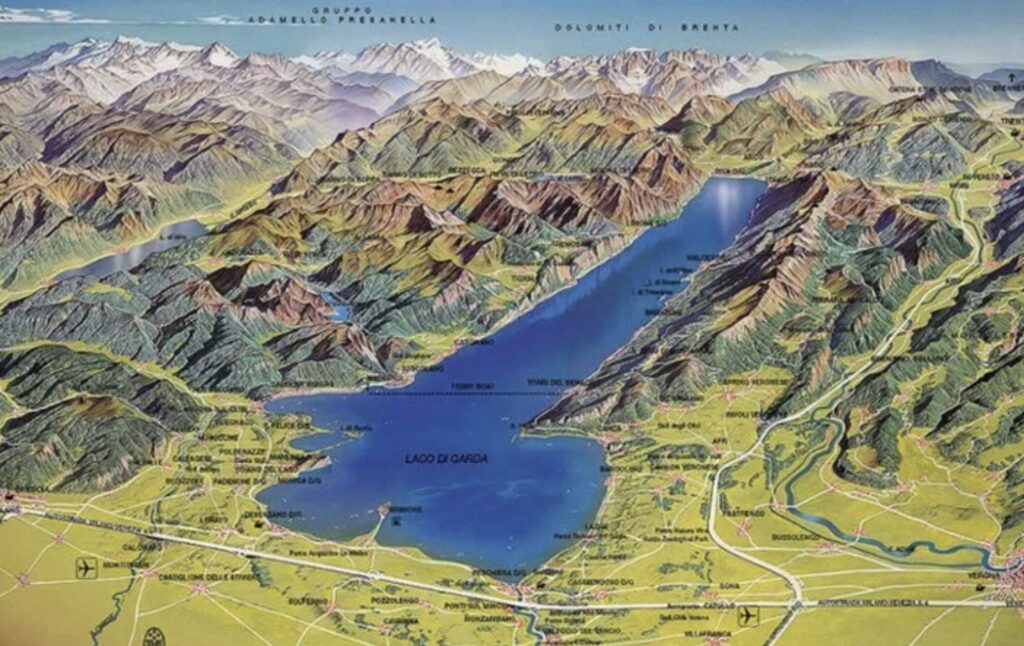
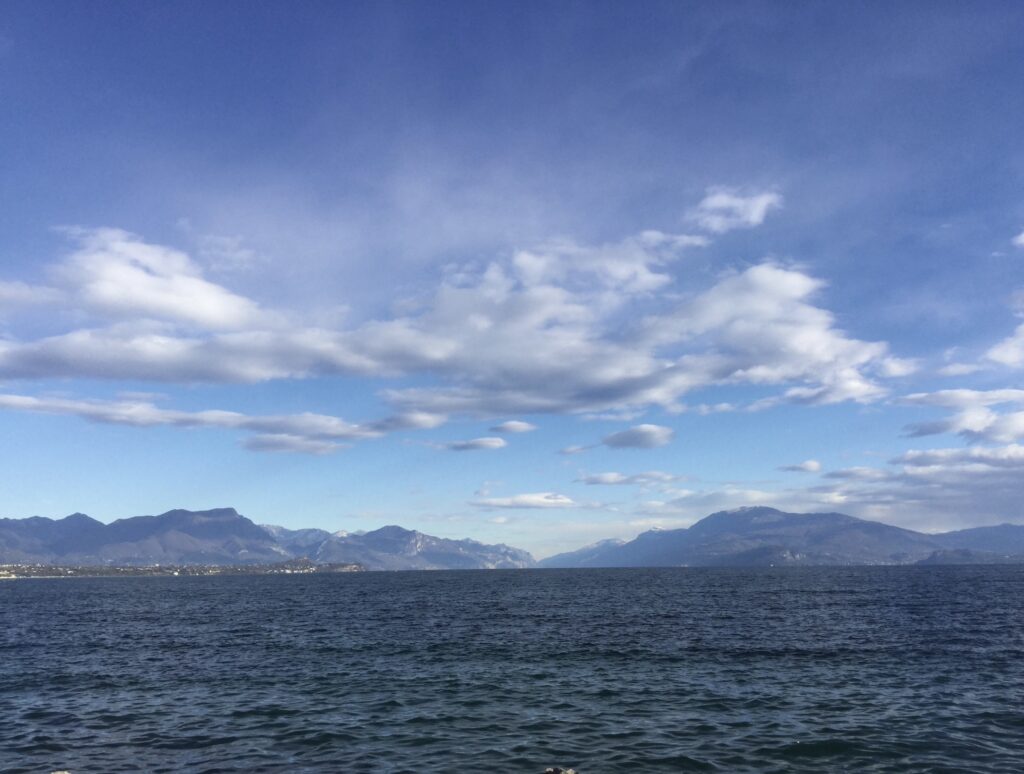
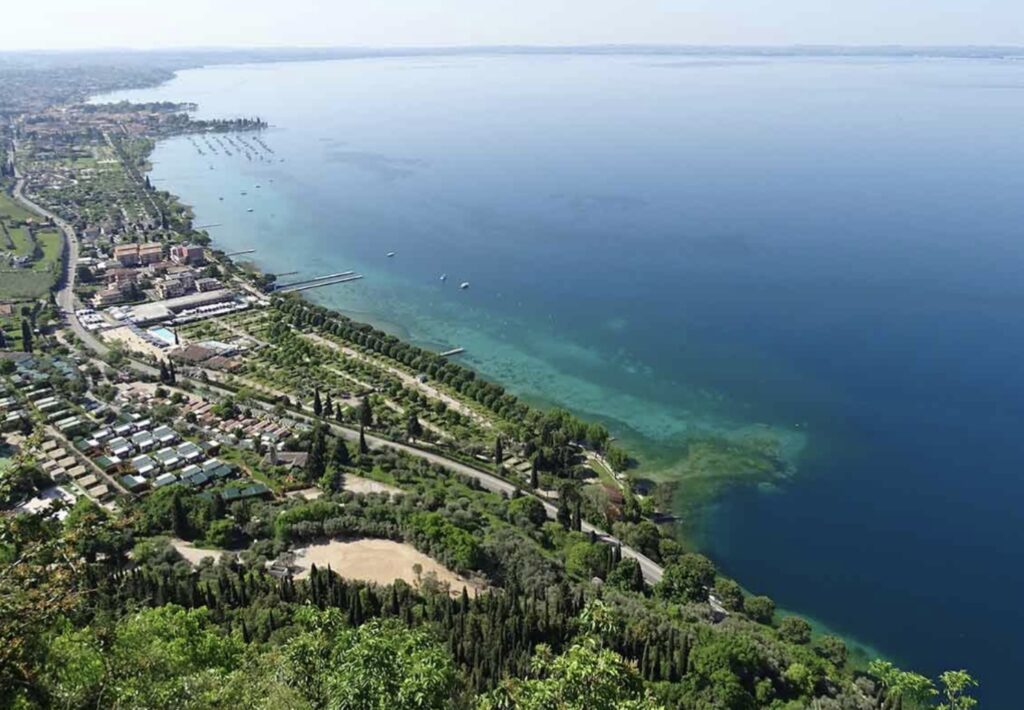
Besides the famous thermal baths, Sirmione offers a variety of other attractions that highlight its historical, cultural, and natural beauty. Here are some key attractions to explore:
- Scaliger Castle (Rocca Scaligera): A 13th-century fortress with an impressive moat, drawbridge, and crenellated walls, offering stunning views of Lake Garda from its towers.
- Grottoes of Catullus (Grotte di Catullo): The extensive ruins of a grand Roman villa believed to have belonged to the poet Catullus, located at the tip of the Sirmione peninsula.
- Santa Maria Maggiore Church: A charming 15th-century church with beautiful frescoes and a peaceful interior, located in the historic center of Sirmione.
- San Pietro in Mavino Church: A small, ancient church dating back to the 8th century, featuring Romanesque architecture, medieval frescoes, and a serene atmosphere.
- Jamaica Beach: A popular spot for sunbathing and swimming, known for its clear waters and flat, smooth rocks that extend into the lake.
- Sirmione Old Town: A picturesque area with narrow, winding streets, quaint shops, and delightful restaurants. It’s perfect for a leisurely stroll to soak in the town’s charming ambiance.
- Maria Callas House: The former residence of the famous opera singer Maria Callas, located in the historic center. While not open to the public, it is an interesting site for fans of the diva.
- Palazzo Maria Callas: A historical building that hosts various cultural events, exhibitions, and concerts throughout the year.
- Wine and Olive Oil Tasting: The surrounding region is known for its wine and olive oil production. Several local wineries and olive oil producers offer tastings and tours.
- Boat Tours: Enjoy a scenic boat tour around Lake Garda, offering breathtaking views of Sirmione and the surrounding landscape from the water.
These attractions make Sirmione a well-rounded destination, appealing to history enthusiasts, culture lovers, and nature seekers alike.
